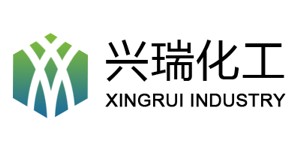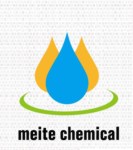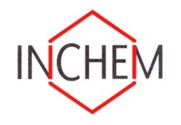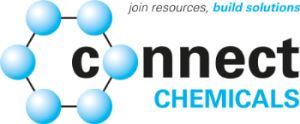|
Suppliers for CAS
868-77-9
|
Properties | | CAS |
868-77-9 | | Formula |
C6H10O3 | | EINECS |
212-782-2 |

|
|
37 Registered suppliers
Simagchem Corporation
P.R.China
Aecochem Corp.
P.R.China
Dayang Chem (Hangzhou) Co.,Ltd.
P.R.China
Sancai Industry Co.,Ltd.
P.R.China
| content | ≥ 98.5%
| | free acid | ≤ 0.1%
| | polymerization inhibitor | 200±20PPM
| | Colour | ≤ 20#
| | Moisture | ≤ 0.2% |
| Content | ≥ 98.5%
| | free acid | ≤ 0.1%
| | polymerization inhibitor | 200±20PPM
| | Colour | ≤ 20
| | Moisture | ≤ 0.2% |
H&Z Industry Co.,Ltd
P.R.China
| Content | ≥ 98.5%
| | free acid | ≤ 0.1%
| | polymerization inhibitor | 200±20PPM
| | Colour | ≤ 20
| | Moisture | ≤ 0.2% |
Xingrui Industry Co., Limited
P.R.China
| Content | ≥ 98.5%
| | free acid | ≤ 0.1%
| | polymerization inhibitor | 200±20PPM
| | Colour | ≤ 20
| | Moisture | ≤ 0.2% |
Hangzhou Meite Industry Co., Ltd (Hangzhou Meite Chemical Co., Ltd)
P.R.China
| Content | ≥ 98.5%
| | free acid | ≤ 0.1%
| | polymerization inhibitor | 200±20PPM
| | Colour | ≤ 20
| | Moisture | ≤ 0.2% |
Leap Chem Co., Ltd
P.R.China
Molecular Formula: C6H10O3 Molecular Weight: 130.14 Hazard Symbols: Xi WGKGermany: 1 HS Code: 29161490
More details are to be found here
Inchem GmbH
Germany
Molecular Formula: C6H10O3 Molecular Weight: 130.14 Hazard Symbols: Xi WGKGermany: 1 HS Code: 29161490
More details are to be found here
Connect Chemicals GmbH
Germany
EC No: 212-782-2
Industry: Coatings Adhesives Sealants, Resins
Synonyms:
HEMA, 2-HEMA
BCH Brühl - Chemikalien Handel GmbH
Germany
EC No: 212-782-2
Industry: Coatings Adhesives Sealants, Resins
Synonyms:
HEMA, 2-HEMA
EC No: 212-782-2
Industry: Coatings Adhesives Sealants, Resins
Synonyms:
HEMA, 2-HEMA
Fountain Biotechnology Co.,Ltd
P.R.China
EC No: 212-782-2
Industry: Coatings Adhesives Sealants, Resins
Synonyms:
HEMA, 2-HEMA
Refine Chemical Co.,Ltd.
P.R.China
EC No: 212-782-2
Industry: Coatings Adhesives Sealants, Resins
Synonyms:
HEMA, 2-HEMA
EC No: 212-782-2
Industry: Coatings Adhesives Sealants, Resins
Synonyms:
HEMA, 2-HEMA
Unilong Industry Co.,Ltd
P.R.China
Appearance : Colorless and transparent liquid
Purity : ≥97.0%
Free acid(As AA) : ≤0.30%
Water : ≤0.30%
Chroma : ≤30
Inhibitor(PPM) : 200±40
OPQ Chemical Co., Ltd
P.R.China
Appearance : Colorless and transparent liquid
Purity : ≥97.0%
Free acid(As AA) : ≤0.30%
Water : ≤0.30%
Chroma : ≤30
Inhibitor(PPM) : 200±40
Shandong Lanhai Industry Co.,Ltd.
P.R.China
Appearance : Colorless and transparent liquid
Purity : ≥97.0%
Free acid(As AA) : ≤0.30%
Water : ≤0.30%
Chroma : ≤30
Inhibitor(PPM) : 200±40
Krada CPS Industry S.L
Spain
Appearance : Colorless and transparent liquid
Purity : ≥97.0%
Free acid(As AA) : ≤0.30%
Water : ≤0.30%
Chroma : ≤30
Inhibitor(PPM) : 200±40
Shandong Minglang Chemical Co., Ltd
P.R.China
Appearance : Colorless and transparent liquid
Purity : ≥97.0%
Free acid(As AA) : ≤0.30%
Water : ≤0.30%
Chroma : ≤30
Inhibitor(PPM) : 200±40
Hangzhou Zhongqi Chem Co., Ltd
P.R.China
Appearance : Colorless and transparent liquid
Purity : ≥97.0%
Free acid(As AA) : ≤0.30%
Water : ≤0.30%
Chroma : ≤30
Inhibitor(PPM) : 200±40
Nantong Xindao Biotech Ltd
P.R.China
Appearance : Colorless and transparent liquid
Purity : ≥97.0%
Free acid(As AA) : ≤0.30%
Water : ≤0.30%
Chroma : ≤30
Inhibitor(PPM) : 200±40
Lori Industry Co., Ltd
P.R.China
Appearance : Colorless and transparent liquid
Purity : ≥97.0%
Free acid(As AA) : ≤0.30%
Water : ≤0.30%
Chroma : ≤30
Inhibitor(PPM) : 200±40
Zehao Industry Co., Ltd.
P.R.China
Appearance Colorless transparent liquid
| HEMA Content (by GC),% ≥ 98.0
| Color (APHA) ≤ 30
| Residual Acid (as MAA),% ≤ 0.3
| Water Content (w/w),% ≤ 0.2
| | Inhibitor Content (MEHQ),ppm 200± 20 |
Finetech Industry Limited
P.R.China
More details are to be found here
Hangzhou Lingrui Chemical Co., Ltd.
P.R.China
More details are to be found here
Skyrun Industrial Co., Ltd.
P.R.China
More details are to be found here
Shandong SanYoung Industry Co., Ltd
P.R.China
Ambeed, Inc.
USA
Purity : 97% (stabilized with MEHQ) Smile code : CC(C(OCCO)=O)=C MDL Number : MFCD00002863 MolFormula : C6H10O3 MolWeight : 130.1418 Available in stock : 142839.9
More details are to be found here
BLD Pharmatech Ltd
P.R.China
Smile code: CC(C(OCCO)=O)=C MDL Number: MFCD00002863 Purity : 97% (stabilized with MEHQ) Available in stock: 112834.9 g
More details are to be found here
Xiamen Equation Chemical Co.,Ltd
P.R.China
Smile code: CC(C(OCCO)=O)=C MDL Number: MFCD00002863 Purity : 97% (stabilized with MEHQ) Available in stock: 112834.9 g
More details are to be found here
Chemos GmbH & Co. KG
Germany
Smile code: CC(C(OCCO)=O)=C MDL Number: MFCD00002863 Purity : 97% (stabilized with MEHQ) Available in stock: 112834.9 g
More details are to be found here
Smile code: CC(C(OCCO)=O)=C MDL Number: MFCD00002863 Purity : 97% (stabilized with MEHQ) Available in stock: 112834.9 g
More details are to be found here
BuGuCh & Partners
Germany
Smile code: CC(C(OCCO)=O)=C MDL Number: MFCD00002863 Purity : 97% (stabilized with MEHQ) Available in stock: 112834.9 g
More details are to be found here
Molecular formula: C6H10O3
Molecular weight: 130.14
EINECS: 212-782-2
Organic monomer; acrylic monomer; non-aqueous solvent; Synthesis of intermediates; Methacrylic acid monomer; Ultra-dry solvent
Mol file: 868-77-9.mol
Melting point -12 ° C
Boiling point 67 ° C3.5 mm Hg (lit.)
Density 1.073 g / mL at 25 ° C (lit.)
Vapor density 5 (vs air)
Vapor pressure 0.01 mm Hg (25 ° C)
Refractive index n20 / D 1.453 (lit.)
Flash point 207 ° F
Storage conditions 2-8 ° C
Water - soluble
Sensitivity Air Sensitive
Chemical properties Colorless, transparent and easily flowing liquid. Soluble in common organic solvents. Miscible with water.
Use Mainly used for the modification of resin and coating. With other acrylic monomer copolymerization, can be obtained side chain containing active hydroxyl acrylic resin, can be esterification and cross-linking reaction, the synthesis of insoluble resin and improve the adhesion, can be used as fiber treatment agent. And melamine-formaldehyde (or urea-formaldehyde) resin, epoxy resin and other common reaction, used in the manufacture of two-component coating. Add advanced car paint, can be maintained long-term mirror gloss. Also be used as synthetic textiles and adhesives and other medical polymer monomer.
It is also used in photopolymerization resins, printing plates, inks, gels (contact lenses) and coating materials for the canned goods. It can be used for transmission electron microscopy (TEM) and optical microscopy (LM) embedding reagents, especially for the `sensitive antigen sites,` the hydration of the sample. GMA monomer white water-like, sticky, thinner than water, than any resin and monomer are easy to penetrate. Especially for use in bone, cartilage and difficult to penetrate plant tissue.
Use Plastic industry for the manufacture of hydroxy-containing acrylic resin. Paint industry and epoxy resin, diisocyanate, melamine formaldehyde resin configuration for the preparation of two-component coating. Grease industry for lubricating oil additives. The electronic industry for the electron microscope of dehydration. The textile industry for the manufacture of fabric adhesive. Analytical chemistry as a chemical reagent. In addition, also used for water-miscible embedding agent for the synthesis of medical polymer materials, thermosetting coatings and adhesives.
Uses Mainly used in the manufacture of thermosetting coatings, fiber processing agents, adhesives, photosensitive resin and medical polymer materials
Production methods 1 from ethylene oxide and methacrylic acid reaction derived. In the methacrylic acid by adding iron thiocyanate, tetramethyl ammonium chloride and a little hydroquinone, heated to 90 ° C stirring, under nitrogen protection, access to ethylene oxide gas reaction of about 2h. The reaction product cooled to 60 ° C, add a small amount of hydroquinone after vacuum distillation, collection 86-89 ° C (0.67kPa) fractions derived products, the yield of 80%. 2. Potassium methacrylate and chlorohydrin in the presence of inhibitor polymerization reaction of crude 2-hydroxy ethyl methacrylate, the salt, refined in the finished product.
Molecular formula: C6H10O3
Molecular weight: 130.14
EINECS: 212-782-2
Organic monomer; acrylic monomer; non-aqueous solvent; Synthesis of intermediates; Methacrylic acid monomer; Ultra-dry solvent
Mol file: 868-77-9.mol
Melting point -12 ° C
Boiling point 67 ° C3.5 mm Hg (lit.)
Density 1.073 g / mL at 25 ° C (lit.)
Vapor density 5 (vs air)
Vapor pressure 0.01 mm Hg (25 ° C)
Refractive index n20 / D 1.453 (lit.)
Flash point 207 ° F
Storage conditions 2-8 ° C
Water - soluble
Sensitivity Air Sensitive
Chemical properties Colorless, transparent and easily flowing liquid. Soluble in common organic solvents. Miscible with water.
Use Mainly used for the modification of resin and coating. With other acrylic monomer copolymerization, can be obtained side chain containing active hydroxyl acrylic resin, can be esterification and cross-linking reaction, the synthesis of insoluble resin and improve the adhesion, can be used as fiber treatment agent. And melamine-formaldehyde (or urea-formaldehyde) resin, epoxy resin and other common reaction, used in the manufacture of two-component coating. Add advanced car paint, can be maintained long-term mirror gloss. Also be used as synthetic textiles and adhesives and other medical polymer monomer.
It is also used in photopolymerization resins, printing plates, inks, gels (contact lenses) and coating materials for the canned goods. It can be used for transmission electron microscopy (TEM) and optical microscopy (LM) embedding reagents, especially for the `sensitive antigen sites,` the hydration of the sample. GMA monomer white water-like, sticky, thinner than water, than any resin and monomer are easy to penetrate. Especially for use in bone, cartilage and difficult to penetrate plant tissue.
Use Plastic industry for the manufacture of hydroxy-containing acrylic resin. Paint industry and epoxy resin, diisocyanate, melamine formaldehyde resin configuration for the preparation of two-component coating. Grease industry for lubricating oil additives. The electronic industry for the electron microscope of dehydration. The textile industry for the manufacture of fabric adhesive. Analytical chemistry as a chemical reagent. In addition, also used for water-miscible embedding agent for the synthesis of medical polymer materials, thermosetting coatings and adhesives.
Uses Mainly used in the manufacture of thermosetting coatings, fiber processing agents, adhesives, photosensitive resin and medical polymer materials
Production methods 1 from ethylene oxide and methacrylic acid reaction derived. In the methacrylic acid by adding iron thiocyanate, tetramethyl ammonium chloride and a little hydroquinone, heated to 90 ° C stirring, under nitrogen protection, access to ethylene oxide gas reaction of about 2h. The reaction product cooled to 60 ° C, add a small amount of hydroquinone after vacuum distillation, collection 86-89 ° C (0.67kPa) fractions derived products, the yield of 80%. 2. Potassium methacrylate and chlorohydrin in the presence of inhibitor polymerization reaction of crude 2-hydroxy ethyl methacrylate, the salt, refined in the finished product.
Kowa American Corp.
USA
Molecular formula: C6H10O3
Molecular weight: 130.14
EINECS: 212-782-2
Organic monomer; acrylic monomer; non-aqueous solvent; Synthesis of intermediates; Methacrylic acid monomer; Ultra-dry solvent
Mol file: 868-77-9.mol
Melting point -12 ° C
Boiling point 67 ° C3.5 mm Hg (lit.)
Density 1.073 g / mL at 25 ° C (lit.)
Vapor density 5 (vs air)
Vapor pressure 0.01 mm Hg (25 ° C)
Refractive index n20 / D 1.453 (lit.)
Flash point 207 ° F
Storage conditions 2-8 ° C
Water - soluble
Sensitivity Air Sensitive
Chemical properties Colorless, transparent and easily flowing liquid. Soluble in common organic solvents. Miscible with water.
Use Mainly used for the modification of resin and coating. With other acrylic monomer copolymerization, can be obtained side chain containing active hydroxyl acrylic resin, can be esterification and cross-linking reaction, the synthesis of insoluble resin and improve the adhesion, can be used as fiber treatment agent. And melamine-formaldehyde (or urea-formaldehyde) resin, epoxy resin and other common reaction, used in the manufacture of two-component coating. Add advanced car paint, can be maintained long-term mirror gloss. Also be used as synthetic textiles and adhesives and other medical polymer monomer.
It is also used in photopolymerization resins, printing plates, inks, gels (contact lenses) and coating materials for the canned goods. It can be used for transmission electron microscopy (TEM) and optical microscopy (LM) embedding reagents, especially for the `sensitive antigen sites,` the hydration of the sample. GMA monomer white water-like, sticky, thinner than water, than any resin and monomer are easy to penetrate. Especially for use in bone, cartilage and difficult to penetrate plant tissue.
Use Plastic industry for the manufacture of hydroxy-containing acrylic resin. Paint industry and epoxy resin, diisocyanate, melamine formaldehyde resin configuration for the preparation of two-component coating. Grease industry for lubricating oil additives. The electronic industry for the electron microscope of dehydration. The textile industry for the manufacture of fabric adhesive. Analytical chemistry as a chemical reagent. In addition, also used for water-miscible embedding agent for the synthesis of medical polymer materials, thermosetting coatings and adhesives.
Uses Mainly used in the manufacture of thermosetting coatings, fiber processing agents, adhesives, photosensitive resin and medical polymer materials
Production methods 1 from ethylene oxide and methacrylic acid reaction derived. In the methacrylic acid by adding iron thiocyanate, tetramethyl ammonium chloride and a little hydroquinone, heated to 90 ° C stirring, under nitrogen protection, access to ethylene oxide gas reaction of about 2h. The reaction product cooled to 60 ° C, add a small amount of hydroquinone after vacuum distillation, collection 86-89 ° C (0.67kPa) fractions derived products, the yield of 80%. 2. Potassium methacrylate and chlorohydrin in the presence of inhibitor polymerization reaction of crude 2-hydroxy ethyl methacrylate, the salt, refined in the finished product.
Evonik Corporation
USA
Molecular formula: C6H10O3
Molecular weight: 130.14
EINECS: 212-782-2
Organic monomer; acrylic monomer; non-aqueous solvent; Synthesis of intermediates; Methacrylic acid monomer; Ultra-dry solvent
Mol file: 868-77-9.mol
Melting point -12 ° C
Boiling point 67 ° C3.5 mm Hg (lit.)
Density 1.073 g / mL at 25 ° C (lit.)
Vapor density 5 (vs air)
Vapor pressure 0.01 mm Hg (25 ° C)
Refractive index n20 / D 1.453 (lit.)
Flash point 207 ° F
Storage conditions 2-8 ° C
Water - soluble
Sensitivity Air Sensitive
Chemical properties Colorless, transparent and easily flowing liquid. Soluble in common organic solvents. Miscible with water.
Use Mainly used for the modification of resin and coating. With other acrylic monomer copolymerization, can be obtained side chain containing active hydroxyl acrylic resin, can be esterification and cross-linking reaction, the synthesis of insoluble resin and improve the adhesion, can be used as fiber treatment agent. And melamine-formaldehyde (or urea-formaldehyde) resin, epoxy resin and other common reaction, used in the manufacture of two-component coating. Add advanced car paint, can be maintained long-term mirror gloss. Also be used as synthetic textiles and adhesives and other medical polymer monomer.
It is also used in photopolymerization resins, printing plates, inks, gels (contact lenses) and coating materials for the canned goods. It can be used for transmission electron microscopy (TEM) and optical microscopy (LM) embedding reagents, especially for the `sensitive antigen sites,` the hydration of the sample. GMA monomer white water-like, sticky, thinner than water, than any resin and monomer are easy to penetrate. Especially for use in bone, cartilage and difficult to penetrate plant tissue.
Use Plastic industry for the manufacture of hydroxy-containing acrylic resin. Paint industry and epoxy resin, diisocyanate, melamine formaldehyde resin configuration for the preparation of two-component coating. Grease industry for lubricating oil additives. The electronic industry for the electron microscope of dehydration. The textile industry for the manufacture of fabric adhesive. Analytical chemistry as a chemical reagent. In addition, also used for water-miscible embedding agent for the synthesis of medical polymer materials, thermosetting coatings and adhesives.
Uses Mainly used in the manufacture of thermosetting coatings, fiber processing agents, adhesives, photosensitive resin and medical polymer materials
Production methods 1 from ethylene oxide and methacrylic acid reaction derived. In the methacrylic acid by adding iron thiocyanate, tetramethyl ammonium chloride and a little hydroquinone, heated to 90 ° C stirring, under nitrogen protection, access to ethylene oxide gas reaction of about 2h. The reaction product cooled to 60 ° C, add a small amount of hydroquinone after vacuum distillation, collection 86-89 ° C (0.67kPa) fractions derived products, the yield of 80%. 2. Potassium methacrylate and chlorohydrin in the presence of inhibitor polymerization reaction of crude 2-hydroxy ethyl methacrylate, the salt, refined in the finished product.
BP Chemical Ltd
U.K.
Molecular formula: C6H10O3
Molecular weight: 130.14
EINECS: 212-782-2
Organic monomer; acrylic monomer; non-aqueous solvent; Synthesis of intermediates; Methacrylic acid monomer; Ultra-dry solvent
Mol file: 868-77-9.mol
Melting point -12 ° C
Boiling point 67 ° C3.5 mm Hg (lit.)
Density 1.073 g / mL at 25 ° C (lit.)
Vapor density 5 (vs air)
Vapor pressure 0.01 mm Hg (25 ° C)
Refractive index n20 / D 1.453 (lit.)
Flash point 207 ° F
Storage conditions 2-8 ° C
Water - soluble
Sensitivity Air Sensitive
Chemical properties Colorless, transparent and easily flowing liquid. Soluble in common organic solvents. Miscible with water.
Use Mainly used for the modification of resin and coating. With other acrylic monomer copolymerization, can be obtained side chain containing active hydroxyl acrylic resin, can be esterification and cross-linking reaction, the synthesis of insoluble resin and improve the adhesion, can be used as fiber treatment agent. And melamine-formaldehyde (or urea-formaldehyde) resin, epoxy resin and other common reaction, used in the manufacture of two-component coating. Add advanced car paint, can be maintained long-term mirror gloss. Also be used as synthetic textiles and adhesives and other medical polymer monomer.
It is also used in photopolymerization resins, printing plates, inks, gels (contact lenses) and coating materials for the canned goods. It can be used for transmission electron microscopy (TEM) and optical microscopy (LM) embedding reagents, especially for the `sensitive antigen sites,` the hydration of the sample. GMA monomer white water-like, sticky, thinner than water, than any resin and monomer are easy to penetrate. Especially for use in bone, cartilage and difficult to penetrate plant tissue.
Use Plastic industry for the manufacture of hydroxy-containing acrylic resin. Paint industry and epoxy resin, diisocyanate, melamine formaldehyde resin configuration for the preparation of two-component coating. Grease industry for lubricating oil additives. The electronic industry for the electron microscope of dehydration. The textile industry for the manufacture of fabric adhesive. Analytical chemistry as a chemical reagent. In addition, also used for water-miscible embedding agent for the synthesis of medical polymer materials, thermosetting coatings and adhesives.
Uses Mainly used in the manufacture of thermosetting coatings, fiber processing agents, adhesives, photosensitive resin and medical polymer materials
Production methods 1 from ethylene oxide and methacrylic acid reaction derived. In the methacrylic acid by adding iron thiocyanate, tetramethyl ammonium chloride and a little hydroquinone, heated to 90 ° C stirring, under nitrogen protection, access to ethylene oxide gas reaction of about 2h. The reaction product cooled to 60 ° C, add a small amount of hydroquinone after vacuum distillation, collection 86-89 ° C (0.67kPa) fractions derived products, the yield of 80%. 2. Potassium methacrylate and chlorohydrin in the presence of inhibitor polymerization reaction of crude 2-hydroxy ethyl methacrylate, the salt, refined in the finished product.
Molecular formula: C6H10O3
Molecular weight: 130.14
EINECS: 212-782-2
Organic monomer; acrylic monomer; non-aqueous solvent; Synthesis of intermediates; Methacrylic acid monomer; Ultra-dry solvent
Mol file: 868-77-9.mol
Melting point -12 ° C
Boiling point 67 ° C3.5 mm Hg (lit.)
Density 1.073 g / mL at 25 ° C (lit.)
Vapor density 5 (vs air)
Vapor pressure 0.01 mm Hg (25 ° C)
Refractive index n20 / D 1.453 (lit.)
Flash point 207 ° F
Storage conditions 2-8 ° C
Water - soluble
Sensitivity Air Sensitive
Chemical properties Colorless, transparent and easily flowing liquid. Soluble in common organic solvents. Miscible with water.
Use Mainly used for the modification of resin and coating. With other acrylic monomer copolymerization, can be obtained side chain containing active hydroxyl acrylic resin, can be esterification and cross-linking reaction, the synthesis of insoluble resin and improve the adhesion, can be used as fiber treatment agent. And melamine-formaldehyde (or urea-formaldehyde) resin, epoxy resin and other common reaction, used in the manufacture of two-component coating. Add advanced car paint, can be maintained long-term mirror gloss. Also be used as synthetic textiles and adhesives and other medical polymer monomer.
It is also used in photopolymerization resins, printing plates, inks, gels (contact lenses) and coating materials for the canned goods. It can be used for transmission electron microscopy (TEM) and optical microscopy (LM) embedding reagents, especially for the `sensitive antigen sites,` the hydration of the sample. GMA monomer white water-like, sticky, thinner than water, than any resin and monomer are easy to penetrate. Especially for use in bone, cartilage and difficult to penetrate plant tissue.
Use Plastic industry for the manufacture of hydroxy-containing acrylic resin. Paint industry and epoxy resin, diisocyanate, melamine formaldehyde resin configuration for the preparation of two-component coating. Grease industry for lubricating oil additives. The electronic industry for the electron microscope of dehydration. The textile industry for the manufacture of fabric adhesive. Analytical chemistry as a chemical reagent. In addition, also used for water-miscible embedding agent for the synthesis of medical polymer materials, thermosetting coatings and adhesives.
Uses Mainly used in the manufacture of thermosetting coatings, fiber processing agents, adhesives, photosensitive resin and medical polymer materials
Production methods 1 from ethylene oxide and methacrylic acid reaction derived. In the methacrylic acid by adding iron thiocyanate, tetramethyl ammonium chloride and a little hydroquinone, heated to 90 ° C stirring, under nitrogen protection, access to ethylene oxide gas reaction of about 2h. The reaction product cooled to 60 ° C, add a small amount of hydroquinone after vacuum distillation, collection 86-89 ° C (0.67kPa) fractions derived products, the yield of 80%. 2. Potassium methacrylate and chlorohydrin in the presence of inhibitor polymerization reaction of crude 2-hydroxy ethyl methacrylate, the salt, refined in the finished product.
Serva Electrophoresis GmbH
Germany
Molecular formula: C6H10O3
Molecular weight: 130.14
EINECS: 212-782-2
Organic monomer; acrylic monomer; non-aqueous solvent; Synthesis of intermediates; Methacrylic acid monomer; Ultra-dry solvent
Mol file: 868-77-9.mol
Melting point -12 ° C
Boiling point 67 ° C3.5 mm Hg (lit.)
Density 1.073 g / mL at 25 ° C (lit.)
Vapor density 5 (vs air)
Vapor pressure 0.01 mm Hg (25 ° C)
Refractive index n20 / D 1.453 (lit.)
Flash point 207 ° F
Storage conditions 2-8 ° C
Water - soluble
Sensitivity Air Sensitive
Chemical properties Colorless, transparent and easily flowing liquid. Soluble in common organic solvents. Miscible with water.
Use Mainly used for the modification of resin and coating. With other acrylic monomer copolymerization, can be obtained side chain containing active hydroxyl acrylic resin, can be esterification and cross-linking reaction, the synthesis of insoluble resin and improve the adhesion, can be used as fiber treatment agent. And melamine-formaldehyde (or urea-formaldehyde) resin, epoxy resin and other common reaction, used in the manufacture of two-component coating. Add advanced car paint, can be maintained long-term mirror gloss. Also be used as synthetic textiles and adhesives and other medical polymer monomer.
It is also used in photopolymerization resins, printing plates, inks, gels (contact lenses) and coating materials for the canned goods. It can be used for transmission electron microscopy (TEM) and optical microscopy (LM) embedding reagents, especially for the `sensitive antigen sites,` the hydration of the sample. GMA monomer white water-like, sticky, thinner than water, than any resin and monomer are easy to penetrate. Especially for use in bone, cartilage and difficult to penetrate plant tissue.
Use Plastic industry for the manufacture of hydroxy-containing acrylic resin. Paint industry and epoxy resin, diisocyanate, melamine formaldehyde resin configuration for the preparation of two-component coating. Grease industry for lubricating oil additives. The electronic industry for the electron microscope of dehydration. The textile industry for the manufacture of fabric adhesive. Analytical chemistry as a chemical reagent. In addition, also used for water-miscible embedding agent for the synthesis of medical polymer materials, thermosetting coatings and adhesives.
Uses Mainly used in the manufacture of thermosetting coatings, fiber processing agents, adhesives, photosensitive resin and medical polymer materials
Production methods 1 from ethylene oxide and methacrylic acid reaction derived. In the methacrylic acid by adding iron thiocyanate, tetramethyl ammonium chloride and a little hydroquinone, heated to 90 ° C stirring, under nitrogen protection, access to ethylene oxide gas reaction of about 2h. The reaction product cooled to 60 ° C, add a small amount of hydroquinone after vacuum distillation, collection 86-89 ° C (0.67kPa) fractions derived products, the yield of 80%. 2. Potassium methacrylate and chlorohydrin in the presence of inhibitor polymerization reaction of crude 2-hydroxy ethyl methacrylate, the salt, refined in the finished product.
Merck Schuchardt OHG
Germany
Molecular formula: C6H10O3
Molecular weight: 130.14
EINECS: 212-782-2
Organic monomer; acrylic monomer; non-aqueous solvent; Synthesis of intermediates; Methacrylic acid monomer; Ultra-dry solvent
Mol file: 868-77-9.mol
Melting point -12 ° C
Boiling point 67 ° C3.5 mm Hg (lit.)
Density 1.073 g / mL at 25 ° C (lit.)
Vapor density 5 (vs air)
Vapor pressure 0.01 mm Hg (25 ° C)
Refractive index n20 / D 1.453 (lit.)
Flash point 207 ° F
Storage conditions 2-8 ° C
Water - soluble
Sensitivity Air Sensitive
Chemical properties Colorless, transparent and easily flowing liquid. Soluble in common organic solvents. Miscible with water.
Use Mainly used for the modification of resin and coating. With other acrylic monomer copolymerization, can be obtained side chain containing active hydroxyl acrylic resin, can be esterification and cross-linking reaction, the synthesis of insoluble resin and improve the adhesion, can be used as fiber treatment agent. And melamine-formaldehyde (or urea-formaldehyde) resin, epoxy resin and other common reaction, used in the manufacture of two-component coating. Add advanced car paint, can be maintained long-term mirror gloss. Also be used as synthetic textiles and adhesives and other medical polymer monomer.
It is also used in photopolymerization resins, printing plates, inks, gels (contact lenses) and coating materials for the canned goods. It can be used for transmission electron microscopy (TEM) and optical microscopy (LM) embedding reagents, especially for the `sensitive antigen sites,` the hydration of the sample. GMA monomer white water-like, sticky, thinner than water, than any resin and monomer are easy to penetrate. Especially for use in bone, cartilage and difficult to penetrate plant tissue.
Use Plastic industry for the manufacture of hydroxy-containing acrylic resin. Paint industry and epoxy resin, diisocyanate, melamine formaldehyde resin configuration for the preparation of two-component coating. Grease industry for lubricating oil additives. The electronic industry for the electron microscope of dehydration. The textile industry for the manufacture of fabric adhesive. Analytical chemistry as a chemical reagent. In addition, also used for water-miscible embedding agent for the synthesis of medical polymer materials, thermosetting coatings and adhesives.
Uses Mainly used in the manufacture of thermosetting coatings, fiber processing agents, adhesives, photosensitive resin and medical polymer materials
Production methods 1 from ethylene oxide and methacrylic acid reaction derived. In the methacrylic acid by adding iron thiocyanate, tetramethyl ammonium chloride and a little hydroquinone, heated to 90 ° C stirring, under nitrogen protection, access to ethylene oxide gas reaction of about 2h. The reaction product cooled to 60 ° C, add a small amount of hydroquinone after vacuum distillation, collection 86-89 ° C (0.67kPa) fractions derived products, the yield of 80%. 2. Potassium methacrylate and chlorohydrin in the presence of inhibitor polymerization reaction of crude 2-hydroxy ethyl methacrylate, the salt, refined in the finished product.
Santa Cruz Biotechnology, Inc.
USA
Molecular formula: C6H10O3
Molecular weight: 130.14
EINECS: 212-782-2
Organic monomer; acrylic monomer; non-aqueous solvent; Synthesis of intermediates; Methacrylic acid monomer; Ultra-dry solvent
Mol file: 868-77-9.mol
Melting point -12 ° C
Boiling point 67 ° C3.5 mm Hg (lit.)
Density 1.073 g / mL at 25 ° C (lit.)
Vapor density 5 (vs air)
Vapor pressure 0.01 mm Hg (25 ° C)
Refractive index n20 / D 1.453 (lit.)
Flash point 207 ° F
Storage conditions 2-8 ° C
Water - soluble
Sensitivity Air Sensitive
Chemical properties Colorless, transparent and easily flowing liquid. Soluble in common organic solvents. Miscible with water.
Use Mainly used for the modification of resin and coating. With other acrylic monomer copolymerization, can be obtained side chain containing active hydroxyl acrylic resin, can be esterification and cross-linking reaction, the synthesis of insoluble resin and improve the adhesion, can be used as fiber treatment agent. And melamine-formaldehyde (or urea-formaldehyde) resin, epoxy resin and other common reaction, used in the manufacture of two-component coating. Add advanced car paint, can be maintained long-term mirror gloss. Also be used as synthetic textiles and adhesives and other medical polymer monomer.
It is also used in photopolymerization resins, printing plates, inks, gels (contact lenses) and coating materials for the canned goods. It can be used for transmission electron microscopy (TEM) and optical microscopy (LM) embedding reagents, especially for the `sensitive antigen sites,` the hydration of the sample. GMA monomer white water-like, sticky, thinner than water, than any resin and monomer are easy to penetrate. Especially for use in bone, cartilage and difficult to penetrate plant tissue.
Use Plastic industry for the manufacture of hydroxy-containing acrylic resin. Paint industry and epoxy resin, diisocyanate, melamine formaldehyde resin configuration for the preparation of two-component coating. Grease industry for lubricating oil additives. The electronic industry for the electron microscope of dehydration. The textile industry for the manufacture of fabric adhesive. Analytical chemistry as a chemical reagent. In addition, also used for water-miscible embedding agent for the synthesis of medical polymer materials, thermosetting coatings and adhesives.
Uses Mainly used in the manufacture of thermosetting coatings, fiber processing agents, adhesives, photosensitive resin and medical polymer materials
Production methods 1 from ethylene oxide and methacrylic acid reaction derived. In the methacrylic acid by adding iron thiocyanate, tetramethyl ammonium chloride and a little hydroquinone, heated to 90 ° C stirring, under nitrogen protection, access to ethylene oxide gas reaction of about 2h. The reaction product cooled to 60 ° C, add a small amount of hydroquinone after vacuum distillation, collection 86-89 ° C (0.67kPa) fractions derived products, the yield of 80%. 2. Potassium methacrylate and chlorohydrin in the presence of inhibitor polymerization reaction of crude 2-hydroxy ethyl methacrylate, the salt, refined in the finished product.
Detailed information on the suppliers of
HEMA |
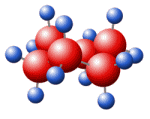


 details
details details
details details
details
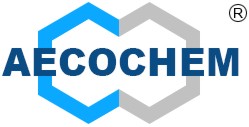
_Co_Ltd_1_575.jpg)


